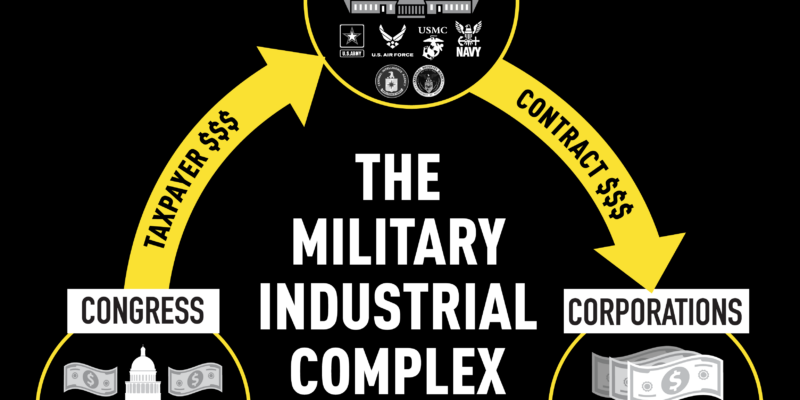
How media coverage fuels the China nuclear threat narrative
As China’s nuclear buildup continues amid rising US-China tensions and as bilateral arms control diplomacy stalls, nuclear weapons are becoming an increasingly salient and volatile piece of the already fraught US-China relationship. For the US national security establishment, China and its nuclear program are also increasingly driving US defense strategy and nuclear posture.
To better understand the landscape of media coverage around this issue, ReThink Media’s Research & Analysis and Peace & Security teams undertook an in-depth media analysis of US coverage on China’s nuclear program, looking at over 2,000 news and opinion articles between 2021 and 2023.
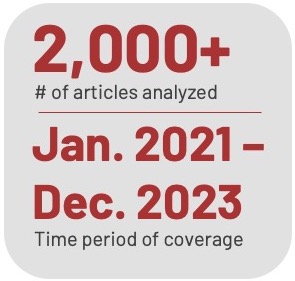
What we found wasn’t surprising but still striking: coverage of China’s nuclear program leans heavily on alarmist, worst-case-scenario language. The media often focuses on China’s nuclear advancements, which stoke fears of an arms race — or worse — without offering much in the way of real solutions or potential for cooperation.
Shifting US public opinion on China
In October 2022, the Biden administration released three major strategy documents as part of an integrated strategy linking nuclear and conventional strategy more tightly, with the National Defense Strategy defining China as the “pacing challenge” to the US. Recent remarks by top Biden foreign policy officials, as well as increasing media coverage and think tank activities on this subject, underscore what the arms control and nuclear disarmament field already knew: China’s nuclear weapons program is a rapidly growing bipartisan concern.
Public opinion polling reflects this heightened level of concern: Recent data from the Pew Research Center shows that 81% of Americans hold an unfavorable view of China, up from just 48% in 2018.
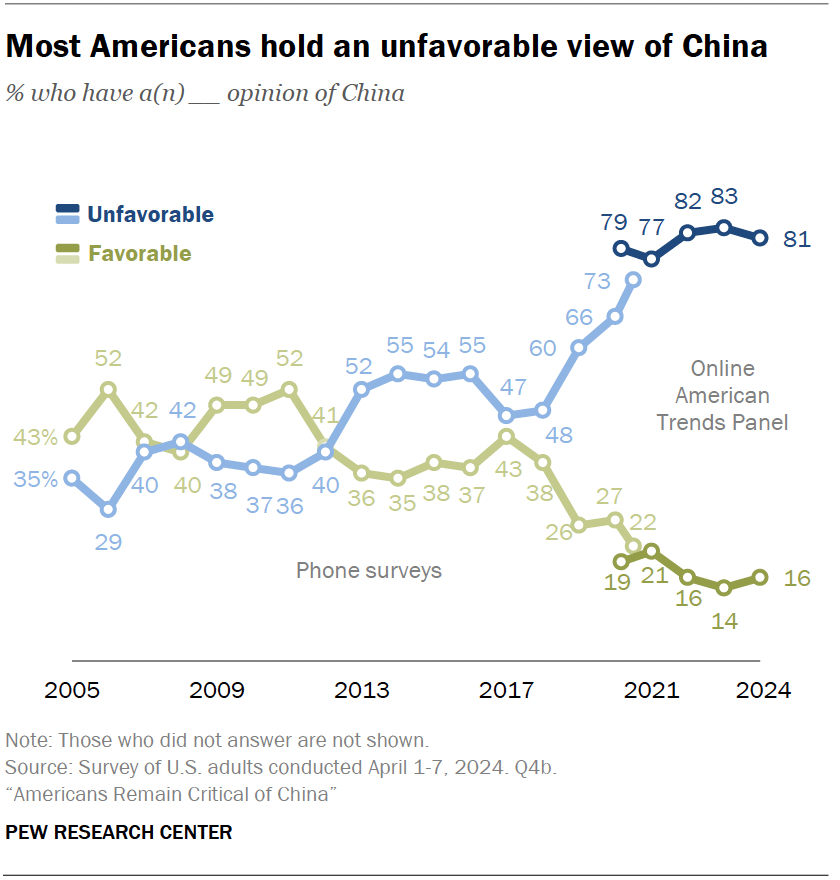
This is a huge increase, driven largely by a mix of geopolitical tensions, media narratives, and high-profile events like the Chinese spy balloon incident. Among Republicans, this view of China is even more severe, with 69% of conservative Republicans viewing China as an outright enemy.
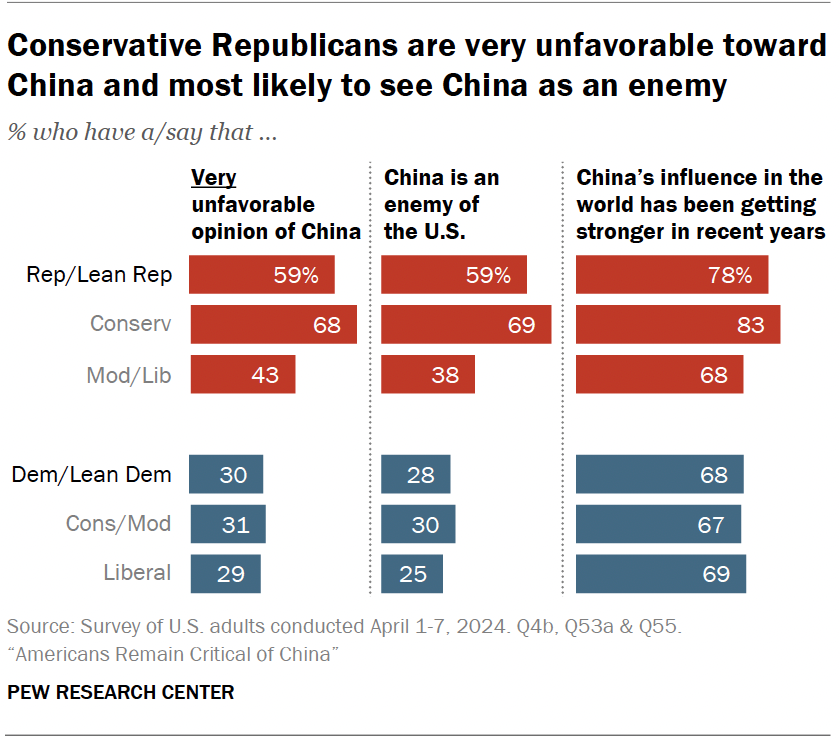
These perspectives aren’t just reflections of US-China relations — they’re also shaped by the media coverage that fuels these fears.
Who’s shaping the narrative?
A closer look at the sources quoted in this coverage reveals an important driver behind this portrayal. US federal officials, foreign government officials, and US military officials are the dominant voices in the coverage.
Top sources of quotes in news about China’s nuclear program, 2021-2023, by % of quotes
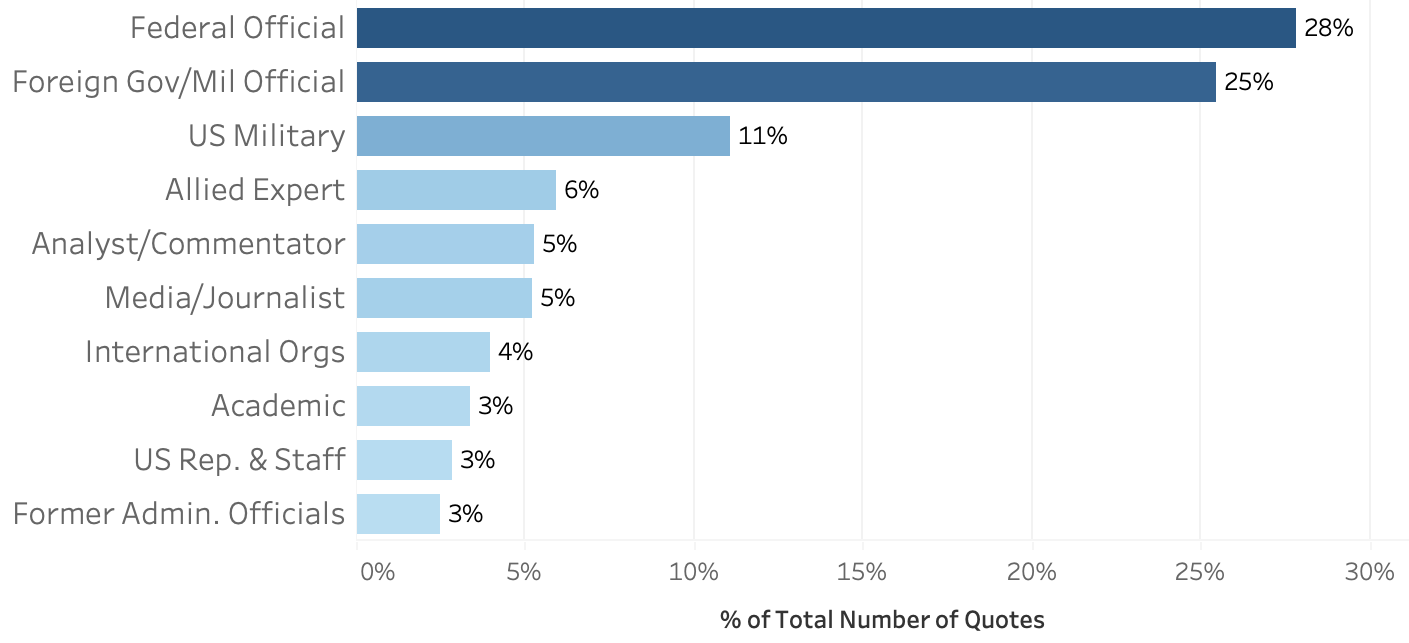
(Graphic credit: ReThink Media)
These sources consistently frame China as a strategic challenge, emphasizing its nuclear buildup as a direct threat to US interests. Military analysts often echo this sentiment, offering dire predictions about the pace and potential scale of China’s nuclear expansion.
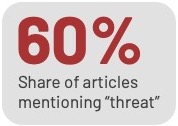 A general “threat” theme is also prevalent: The term “threat” appears in about 60% of the articles analyzed, while “Cold War” is mentioned in approximately 25%.
A general “threat” theme is also prevalent: The term “threat” appears in about 60% of the articles analyzed, while “Cold War” is mentioned in approximately 25%.
Another common topic covered is China’s advancements in hypersonic technology, mentioned in 18% of articles, and the need for transparency and accountability, discussed in about 12% of articles.
Coverage is also rife with speculation, especially from political sources, namely members of Congress and both current and former politicians. This speculation is not idle or random; rather, it often employs worst-case guesses, estimates, and hypotheses about China’s activities and intentions to paint a picture of a looming threat. For example, in a February 2023 Washington Post article, Rep. Michael R. Turner (R-Ohio), chairman of the House Intelligence Committee, said of China in the wake of the “spy balloon” sighting:
“I believe that they were trying to gain information on how to defeat the command and control of our nuclear weapons systems and our missile defense systems.”
As for what the US should do about China’s nuclear and military buildup, op-ed and commentary authors frequently argued for a more robust and assertive US strategy towards China — and inversely, critique US policy as “weak”. Some commentators argue that the current US administration has not responded adequately to China’s provocations, which has emboldened China to further challenge US interests. Such a critique of US policy is exemplified in this headline from a Fox News opinion piece by Republican Rep. Michelle Steel (CA-45) on the Biden-Xi summit in November 2023:
 That said, some voices are pushing for a different approach. A minority of opinion pieces and news quotes — particularly those from arms control advocates — emphasize the importance of US-China dialogue and cooperation on not only nuclear weapons development but also global health, technological advancements, and global trade.
That said, some voices are pushing for a different approach. A minority of opinion pieces and news quotes — particularly those from arms control advocates — emphasize the importance of US-China dialogue and cooperation on not only nuclear weapons development but also global health, technological advancements, and global trade.
In an example of a quote advocating for diplomacy, David Gompert, Senior Fellow at RAND and former US intelligence official, stated in an NPR interview in February 2023:
“What is missing is dialogue. The US-China strategic nuclear relationship, which is stable because of mutual deterrence […] is fraught with suspicion. […] And that level of suspicion is very troublesome and potentially dangerous. What we need is not simply a hotline. We need a dialogue.”
With its emphasis on threat and danger, this coverage obscures key nuances. China’s nuclear stockpile, while growing, is still vastly smaller than those of the US and Russia. Yet the media coverage lacks this important context, which is crucial for understanding the broader picture of nuclear arms control. When the narrative is dominated by alarmist language and speculation, it becomes harder for the public to see the potential for diplomacy and cooperative engagement.
The stakes are incredibly high. If we don’t invest in building a more integrated media engagement strategy that prioritizes diplomacy over confrontation, we risk heading down a path that no one — neither the US nor China — wants to take.
For more on coverage of China’s nuclear program, download the full report.
If you have questions about this research, please contact analysis@rethinkmedia.org. For details about ReThink Media’s communications work in this sector, please reach out to Peace & Security Program Director Mac Hamilton at mackenzie@rethinkmedia.org.


